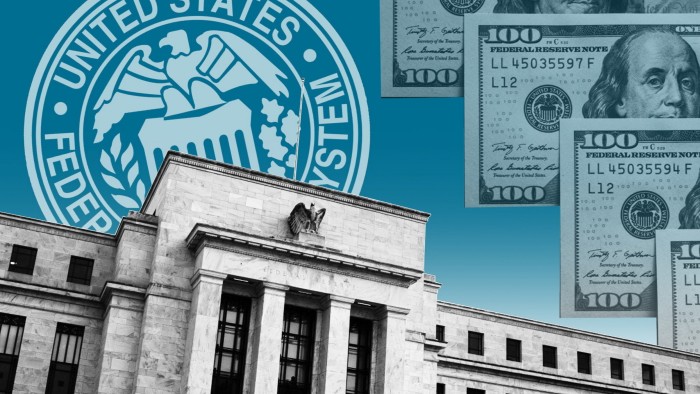The Fed alone cannot bring inflation down

Roula Khalaf, Editor of the FT, selects her favourite stories in this weekly newsletter.
The writer is the founder of Sahm Consulting and a former Federal Reserve and White House economist
The Federal Reserve is the only institution in the US with an official mandate to maintain stable prices. Even so, the Fed is not the only institution we need to help fight inflation, especially given the supply disruptions from the pandemic and the war in Ukraine.
The Fed, by raising interest rates, can push down demand, but it cannot push up supply. And Adam Shapiro, an economist at the San Francisco Fed, estimates that about 40 per cent of inflation is supply-driven, 40 per cent is demand-driven, and the other 20 per cent is ambiguous. Given that reality, the Fed alone cannot get inflation back to the 2 per cent target.
The Fed’s primary tool to rein in inflation is the federal funds rate which influences the interest rates at which consumers and businesses borrow. The Fed rate rises work through financial markets and monetary policy is only one factor determining the price of debt, meaning that the central bank’s main tool is not a precise one.
In addition, forward-looking markets incorporate expectations of future Fed decisions in today’s interest rates. Those expectations may or may not align with the Fed’s actual intentions. For example, overall financial conditions, measured by a Chicago Fed index, had become more restrictive since the Fed began raising rates last year. But in October, the index began falling, suggesting that financial conditions are becoming more supportive of demand. An even clearer example: mortgage rates have moved down about a percentage point from their peak of 7 per cent in November, even as the Fed continued to increase the federal funds by 0.75 percentage points.
The finances of households also suggest that changes to the federal funds rate may not have as powerful an effect on demand. Households, including those with lower income, have substantially more savings than before the pandemic, which allows them to buffer the higher costs of borrowing. Plus, during the pandemic, many were able to pay down debt. In addition, many homeowners with 30-year fixed mortgages had locked in the low rates that prevailed before the recent rises. If interest rates are less relevant to spending, that means the Fed is less relevant too.
Even so, the Fed is influencing demand in interest rate-sensitive sectors. Business fixed investment has contracted since the second quarter of last year and housing starts plunged by 20 per cent. However, the effects on the labour market are modest even in areas such as construction. Companies are likely holding on to workers because it has been so hard to rehire. If people keep their jobs, it’s hard to get demand down. And if the labour market is strong, it will be harder for the Fed to contain inflation.
An important lesson is that supply is crucial to the economy. More workers ease the labour shortage and upward pressure on wages. Last year, 1mn more immigrants came to the US, continuing the rebound from pandemic lows. Julia Coronado, the founder of Macropolicy Perspectives, expects immigration to continue to rise in the coming years. That should help ease the labour shortages and push down on inflation, even though they will increase demand. Again, the Fed had no influence on immigration policy. The best way to solve a labour shortage is with more workers, not fewer customers. But the Fed can only give us less demand and fewer customers.
Fortunately, Congress and the White House can influence supply. A key example is the Biden administration’s efforts to bring oil and gasoline down after Russia’s invasion of Ukraine. These included the opening of the Strategic Petroleum Reserve and guaranteeing producers a price to buy oil and refill the reserve. Oil production rose last year and the national price of gasoline is back below pre-invasion levels.
An important advantage of fiscal policy is its ability to target certain sectors critical to restraining inflation, in contrast to the Fed’s imprecise tools. The US infrastructure bill, the Chips Act to boost domestic semiconductor production, and the Inflation Reduction Act all have elements that will help with inflation, especially in the future, by creating or fortifying supply.
The Fed absolutely has a role to play and its rate rises are almost certainly contributing to the slowing of growth. At the same time, demand management is not an efficient way to deal with supply-driven inflation. It is harder to co-ordinate fiscal policy, but the past two years have shown it can be done, and it must be done. The challenge is to do it well.
Comments